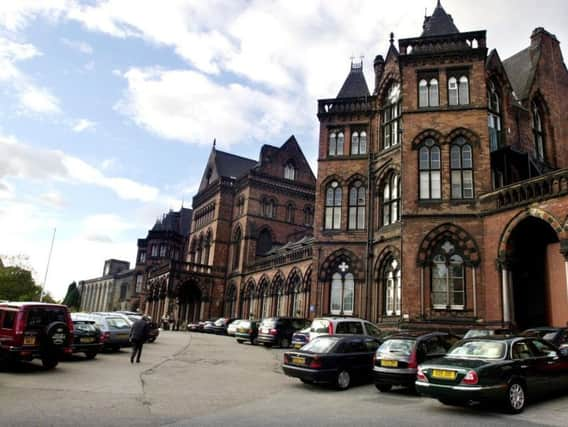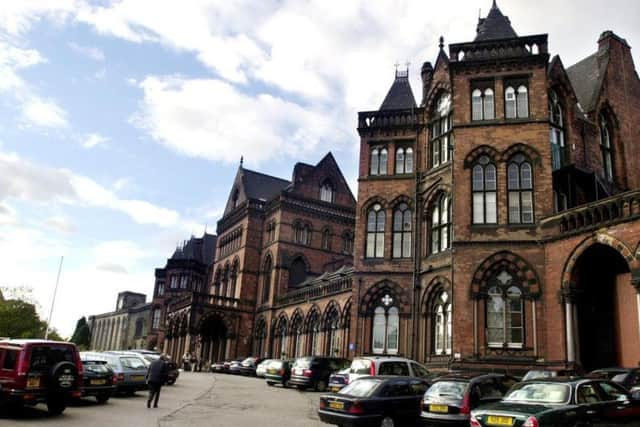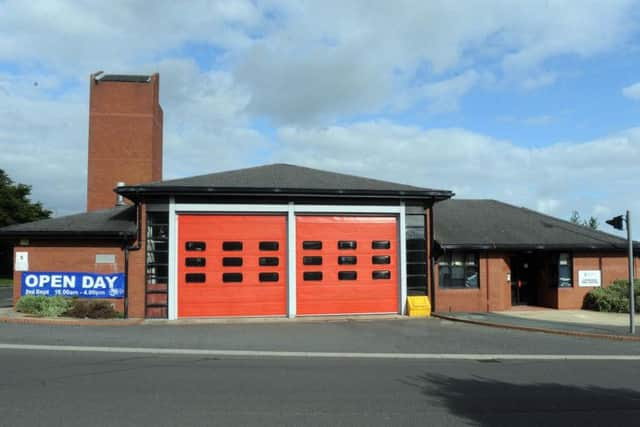10 Leeds sites where some of 40,000 planned homes should be built


More than 40,000 homes are earmarked in a Leeds City Council document known as the Site Allocations Plan, which lists ideal sites in the city for housing development over the coming years.
But some of the sites will be more recognisable than others, with former schools, hospitals and even tanneries listed as ideal places for new homes in the document, which was rubber-stamped by the council earlier this summer.
Here are a few of the interesting sites listed:


Wortley High School (6.6 hectares) – 40 units
Advertisement
Hide AdAdvertisement
Hide AdA school that was only open for less than two decades, Wortley High School first opened in 1992 as a replacement for Silver Royd Girls School. It closed in 2011 when it was merged with West Leeds High School to form Swallow Hill Community College.
In its heyday, the school was a specialist arts college, and was once one of only two schools in Leeds to provide a resource for pupils with complex speech and language difficulties.
Leeds City Boys’ pitch, Oldfield Lane, Wortley (1.7 hectares) – 61 units


While not officially affiliated with Leeds United, Leeds City Boys provided a route into professional football for the city’s best youth players.
Advertisement
Hide AdAdvertisement
Hide AdLegends of the game such as John Charles, David Batty and Stuart McCall all learned their trade during their formative years on the pitch, which was donated to the club by Leeds headteacher Thomas Vernon Harrison in the 1930s.
The site has seen better days, however, and is now overgrown and unrecognisable from its heyday.
Cookridge Fire Station (0.42 hectares) – 15 units
The fire station was only built in 1990 but has been earmarked as being the idea site for up to 15 new homes.
Horsforth Campus (5.35 hectares) – 134 units
Formerly part of Park Lane College, Leeds City College’s Horsforth Campus shut down in 2017.
Advertisement
Hide AdAdvertisement
Hide AdThe built-up site itself is already subject to an outline planning application for 65 homes, by developers Stonewater.
The SAP expands on this by suggesting more than five hectares of land around the site should also be used for up to 134 homes.
Former Gas Works, Armley Gyratory (5.42 hectares) – 122 units and 2.5 hectares of employment land
British Gas announced earlier this year that it was due to close its offices in Canal Road next to Armley Gyratory.
Advertisement
Hide AdAdvertisement
Hide AdThe sire includes the company’s training centre, as well as a call centre. The YEP was told earlier this year that the changes were made due to the ageing infrastructure of the site. Staff are expected to be moved to offices in Holbeck.
The SAP states that land is required for planned improvement works to the Armley Gyratory, as well as employment and housing.
Thomas Danby College, Roundhay Road (4.82 hectares) – 118 units and one hectare of employment land
The further education college was opened in 1970 and specialised in post-16 catering and hair and beauty courses.
Advertisement
Hide AdAdvertisement
Hide AdIt merged with other colleges in the city to become Leeds City College in 2009. The site then closed four years later, and was relocated to the Printworks building in Hunslet.
The SAP suggests a mixed employment and residential use for the site.
Buslingthorpe Tannery / Hill Top Works, Sheepscar (3.23 hectares) – 189 units
One of the city’s most iconic industrial sites, Buslingthorpe developed as an industrial site in the late 1800s.
Advertisement
Hide AdAdvertisement
Hide AdIt has since become designated as an industrial conservation area, and the SAP recommends that the main tannery and chimney buildings “make a positive contribution to the character of the conservation area”, and recommends that they should be kept.
The Faversham, Springfield Mount (0.32 hectares) – 30 units
Once the epicentre of the Leeds indie scene of the mid-2000s, acts such as The Klaxons, Plan B and The Arctic Monkeys graced its stage, while club nights such as Bad Sneakers went down in hipster folklore.
The Fav is now a more mellow affair, featuring a bar and kitchen, along with rooms to hire for private parties.
The SAP has also recommended that the site could be suitable for older persons’ housing.
Advertisement
Hide AdAdvertisement
Hide AdLeeds General Infirmary, Great George Street (4.25 hectares) – 372 units and 12,000 square metres office space
Probably the most ambitious of the bunch, the 4.25 hectare site at Great George Street has been earmarked for both housing and office use.
The infirmary dates all the way back to 1771, when a hospital was opened on what is now infirmary street in the city centre. The current site in Great George Street was opened in 1869 by Prince Albert.
The plans do not include the entire site, with only the Victorian buildings between Calverley Street and Thorseby Street included in the SAP.
Advertisement
Hide AdAdvertisement
Hide AdLeeds College of Building, North Street (0.9 hectares) – 180 units and 4,500 square metres office space.
The building college was set up in 1960 and boasts more than 6,000 students.
Its new £13m Hunslet campus was opened in July this year.Richard Beecham , Local Democracy Reporting Service